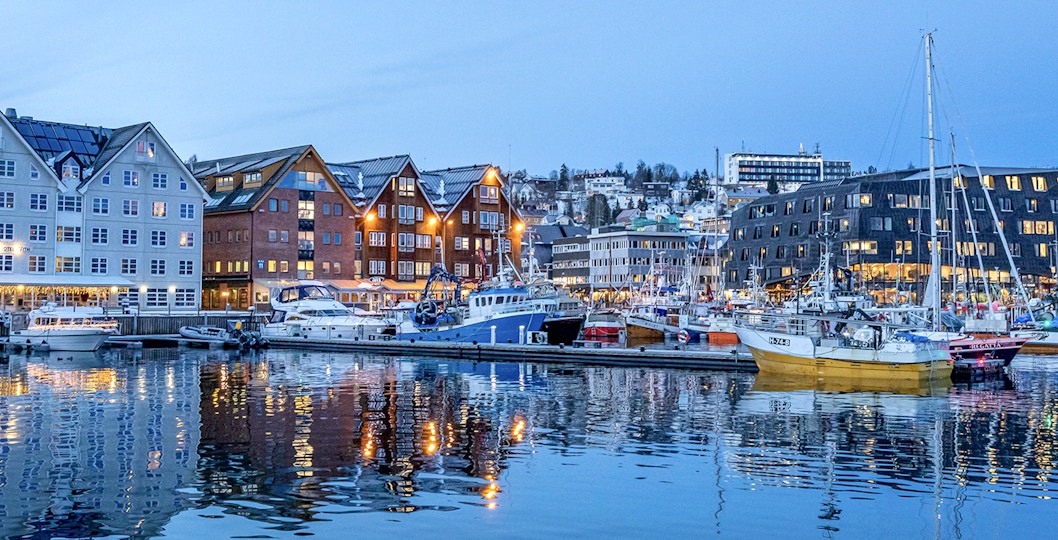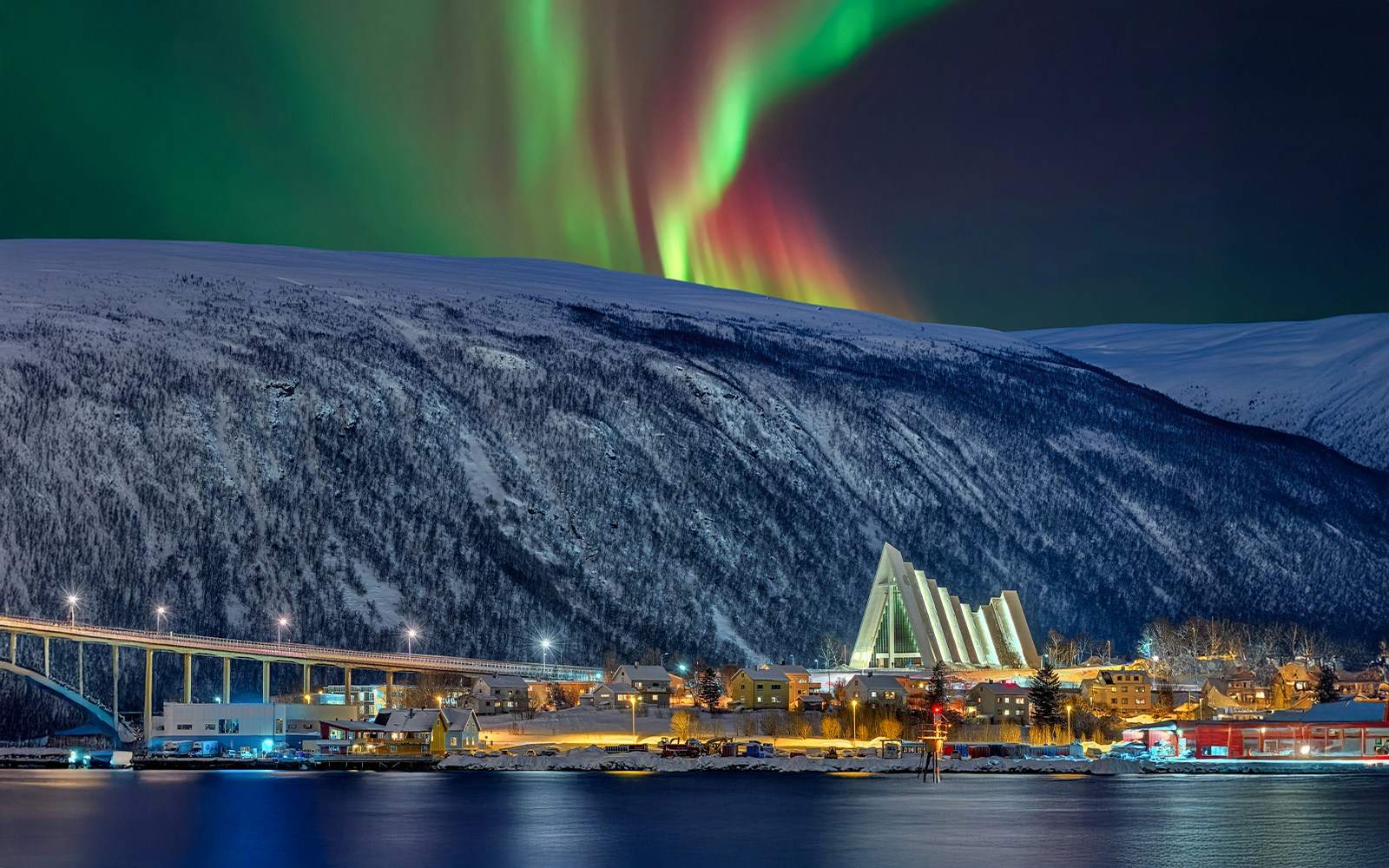Tromsø sits well above the Arctic Circle at 69°N, making it one of the world’s northernmost cities. It lies on Tromsøya, an island surrounded by fjords and backed by dramatic peaks that rise sharply from the sea. Despite its extreme latitude, the Gulf Stream keeps Tromsø surprisingly mild, giving it a climate far warmer than most places at the same latitude.
Best ways to reach Tromsø
Because of its island setting and Arctic latitude, flying is by far the most convenient:
- By air: Tromsø Airport (TOS) is just 5 km from the city centre, with frequent flights from Oslo (≈1 hr 45 min) and connections from major European cities in winter.
- By road: Long-distance buses connect Tromsø to Alta, Narvik, and the Lofoten region, though travel times are long, especially in winter.
- By sea: Hurtigruten and Havila coastal ships stop here daily.



